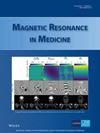Motion-corrected brain MRI at ultralow field (64 mT)
Abstract
Purpose
The study investigates the feasibility of applying a retrospective motion-correction technique to ultralow-field (ULF) MRI data to improve reconstructed image quality when there is patient motion, which is likely to be a critical challenge in portable, point-of-care imaging.
Theory & Methods
The study tests alignedSENSE, an iterative motion correction and reconstruction method with SENSE, for ULF MRI, with additional corrections to estimate and correct within-scan phase variations. The method was applied to in vivo brain volumetric data acquired from five healthy volunteers using a 64 mT portable MRI scanner. The volunteers underwent different motion types and levels, with corrections evaluated using both visual and quantitative metrics.
Results
Motion correction, particularly when within-scan phase variations are also accounted for, showed clear improvements in image quality. Without making any assumptions about the origin of these phase variations, incorporating them into the signal model and jointly estimating with the image/motion parameters increases the data consistency. This improves the image quality and motion parameters across various levels of induced motion. Quantitative analysis confirmed that the combined motion and phase corrections outperformed conventional parallel imaging reconstruction, although extreme motion cases still pose challenges.
Conclusion
The study demonstrates that alignedSENSE motion-correction techniques can be effectively applied to ULF MRI systems. The results suggest that these techniques can substantially enhance image quality without increasing scan time, which could make ULF MRI more clinically viable for point-of-care deployment.

 求助内容:
求助内容: 应助结果提醒方式:
应助结果提醒方式:


